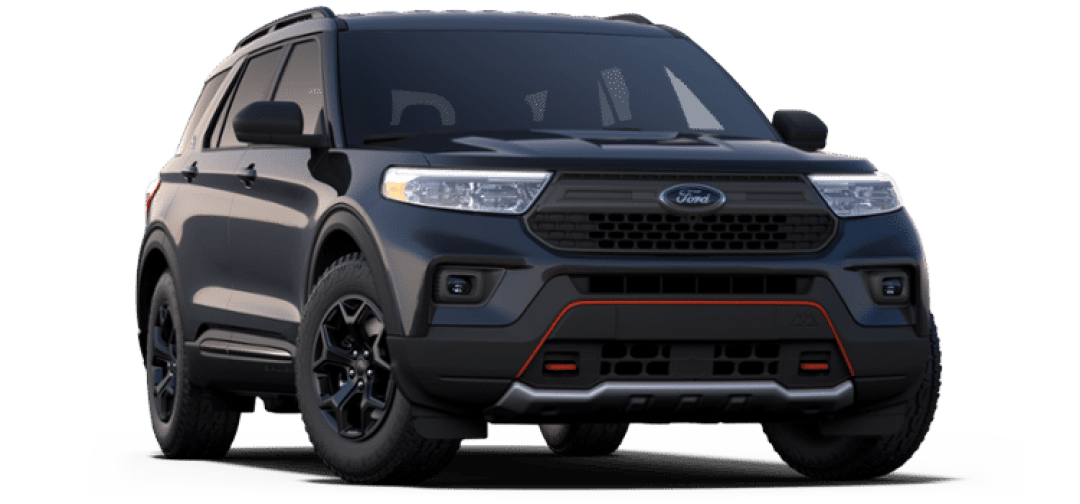News & Articles
Browse all content by date.

Auto manufacturers have been raking in huge profits for years by following the theory that styling sells, while a few conscientious manufacturers stick to the “form follows function” belief.
With Ford, life at the top plateau means that the substance had better be in place, so tweaking the style can add the finishing touch.
That seems to be the idea behind the 2023 Explorer, the newest version of the vehicle we can all thank for inspiring the enormous groundswell leading us to buy SUVs of all shapes and sizes.
The first Explorer was the culprit that got us headed in that direction, and while dozens of competitive SUVs now challenge the Explorer at every turn, the popular midsize vehicle obviously is ready to hold its own. And then some.
I had a chance to drive the new 2023 Explorer, and it was a special week because it was the Timberline model, which is Ford’s bow to style.
First, the test vehicle was a deep, powerful green color, which looked almost black in subdued light. Second, because a lot of families are doing some light off-roading these days, while heading North to the cabin, or just making adventurous treks into places like the Boundary Waters Canoe Area or any regional or state park across the country, Ford has raised the Timberline an inch above the standard and installed skidplates underneath.
In another interesting strategic move, Ford has an arsenal of modern engines, ranging mainly from large turbocharged V6es to medium and smaller 4-cylinders, also getting turbochargers via the EcoBoost nickname.
In many cases, specialty versions get a boost in power by installing a larger engine, but in the case of the Explorer, which has larger engines available, Ford is offering a smaller 2.3-liter 4-cylinder EcoBoost powerplant.
As I see it, Ford is aiming the Timberline at becoming the Family Truckster for contemporary families, who may be more interested in better fuel economy without the need for excessive power.
The new Explorer Timberline lives up to those objectives, and establishes a new symbol for the Explorer. A neat orange trim line – they call it tangerine – that traces the lower front fascia and adds a bit of pizazz. Just the right accent, while the black – they say dark gray – grille and wheels give the Timberline a tougher image that can attract plenty of customers.
The EcoBoost 2.3 delivered fuel economy in the 23-24 range, while the EPA estimate says 19 city and only 22 miles per gallon for highway driving. Controls are well laid out, and the now-familiar rotating knob on the console handles the gear shifting, although with the 10-speed automatic transmission most of your shifting will be to change from park to drive or reverse.
If you do want to be a bit more adventurous, you also have paddles mounted on the steering wheel that let you manually up- or downshift at a touch for picking your ratio, particularly helpful as well as fun when climbing or descending hills.
Ford has the whole SUV scene covered with qualified vehicles, starting with the tiny EcoSport, which is no longer produced; moving up to the Edge, which was discontinued last year; then the wildly popular Escape; on up to the Expedition, and adding the Bronco Sport, on the Escape platform.
Buyers can go for the economy and agility of the Escape or Bronco Sport, or they can go for the size and brute strength of the Expedition, but the Explorer fits right into its primary niche of being just big enough and not too big.
Adding the third row fold-down seat is a convenience that should bolster the Explorer’s popularity, and by loading all the latest safety and connectivity features into the new Explorer, the solid feel and reactive steering add to the secure feeling of the Timberline.
It’s intriguing to try to figure out Ford’s strategy these days.
On their huge Expedition, which I wrote about recently, there is also a Timberline edition, which has black lettering and black wheels aimed at making a large SUV sportier, but in that application of the nickname, Ford upgrades the engine. The same 3.5-liter high-output EcoBoost used in the F150 Raptor makes the big truck fly, and buyers are lining up to get the hot version of the Expedition.
But offering the trim features and going to the very efficient 2.3 EcoBoost used in the Bronco and Ranger takes the Explorer in the opposite direction – which makes good sense.
And Ford won’t mind if folks line up for the Explorer Timberline for whatever reason.
| Tweet |


